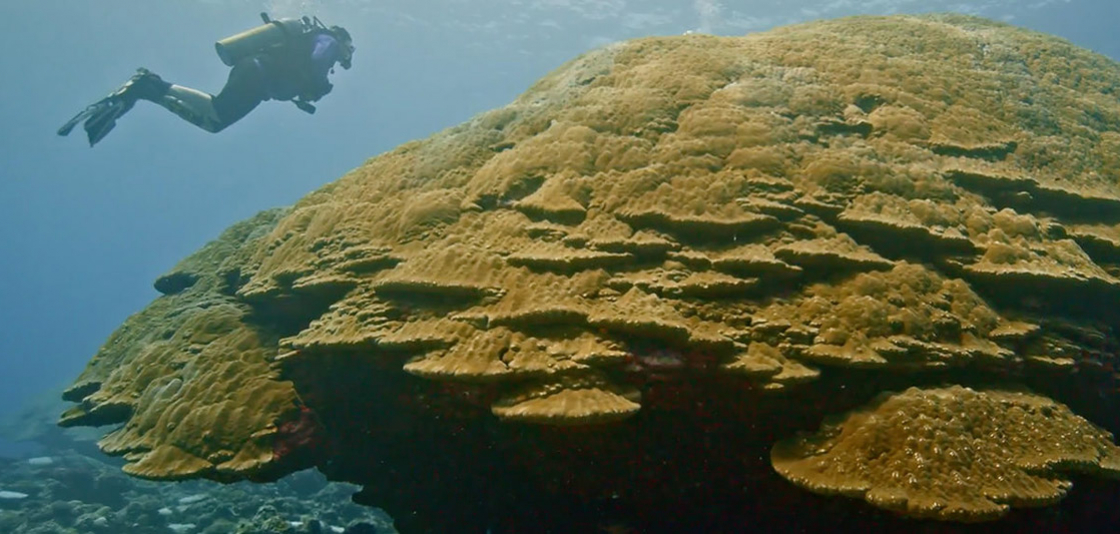Taʻū on:
[Wikipedia]
[Google]
[Amazon]
Taʻū is the largest island in the Manuʻa Islands and the easternmost volcanic island of the Samoan Islands. Taū is part of American Samoa. In the early 19th century, the island was sometimes called ''Opoun''.
Taū is well known as the site where the American anthropologist Margaret Mead conducted her dissertation research in Samoa in the 1920s, after which she published her findings in a work titled '' Coming of Age in Samoa''. Ta’u also has the highest mountain in American Samoa, Mount Lata, as well as of
 Administratively, the island is divided into three counties: Faleāsao County, Fitiʻuta County, and
Administratively, the island is divided into three counties: Faleāsao County, Fitiʻuta County, and
Tau Island: Faleasao, Fitiuta, and Ta'u counties, Manu'a District, United States Census Bureau
{{DEFAULTSORT:Ta'ū Mountains of American Samoa Islands of American Samoa Volcanoes of American Samoa Polygenetic shield volcanoes Manu'a
National Park
A national park is a nature park, natural park in use for conservation (ethic), conservation purposes, created and protected by national governments. Often it is a reserve of natural, semi-natural, or developed land that a sovereign state dec ...
lands, and of waters separated by some of the tallest sea cliffs in the world.
On the western coast of Taū are the conterminous villages of Lumā and Siufaga, usually referred to jointly as Taū village. The village of Taū has been named the capital of the Manuʻa Islands. Fitiuta
Fitiuta, also known as Fiti'uta or Maia, is a village on the northeast coast of Taʻū island, one of the Manuʻa Islands in American Samoa. According to the 2000 United States census, Fitiuta had a population of 358, down from 454 in 1990. ...
is another Taū village, located on the northeast side of the island.
Geography
The island is the eroded remnant of ahotspot
Hotspot, Hot Spot or Hot spot may refer to:
Places
* Hot Spot, Kentucky, a community in the United States
Arts, entertainment, and media Fictional entities
* Hot Spot (comics), a name for the DC Comics character Isaiah Crockett
* Hot Spot (Tra ...
shield volcano with a caldera complex or collapse feature (Liu Bench) on the south face. The summit of the island, called Lata Mountain
Lata Mountain is the summit of the island of Taʻū in the Manuʻa Islands. The summit of Lata Mountain the highest point in American Samoa.Brillat, Michael (1999). ''South Pacific Islands''. Hunter Publishing, Inc. Page 139. .
See also
*List o ...
, is at an elevation of , making it the highest point in American Samoa. The last known volcanic eruption in the Manua Islands was in 1866, on the mid-ocean ridge that extends west-northwest towards nearby Ofu-Olosega.
The largest airport in the Manua Islands is on the northeast corner of Taū at Fitiuta. There is also a private airport. A boat harbor is located at Faleāsao at the northwestern corner of the island. A roadway along the north coast connects all of the several inhabited villages between Taū on the west and Fitiuta.
All of the southeastern half of Taū—including all of the rainforest on top of Lata Mountain and within the caldera—the southern shoreline, and associated coral reefs are part of the National Park of American Samoa. The park includes the ancient, sacred site of Saua, considered to be the birthplace of the Polynesian people.
 Administratively, the island is divided into three counties: Faleāsao County, Fitiʻuta County, and
Administratively, the island is divided into three counties: Faleāsao County, Fitiʻuta County, and Taʻū County Taū County is a county in the Manu'a District in American Samoa
American Samoa ( sm, Amerika Sāmoa, ; also ' or ') is an unincorporated territory of the United States located in the South Pacific Ocean, southeast of the island country of Sam ...
. Along with the Ofu and Olosega Islands, Taū Island comprises the Manuʻa District of American Samoa. The land area of Taū Island is and it had a population of 873 persons as of the 2000 census and of 790 persons in the 2010 census.
In 2000, a subsea volcano from Taū Island was discovered by scientists. Rockne Volcano has formed an undersea mountain which is tall. Its peak is below the ocean surface.
Anthropological research
Taū is where the 23-year-old anthropologist Margaret Mead conducted her dissertation research in Samoa in the 1920s, published in 1928 as ''Coming of Age in Samoa''. In her work, she studied adolescent girls and compared their experience to those of Western societies. She concluded that adolescence was a smooth transition, not marked by the emotional or psychological distress, anxiety, or confusion seen in the United States.Electricity
Until 2016, being a small and isolated island, the island relied on costly and polluting diesel generators to supply electricity. However, with the construction of a solar array, battery storage system, and microgrid, the island's power relies almost 100% from the sun. The solar array was built by SolarCity and now includes sixty Tesla Powerpacks. The system should be a more reliable source of energy and was designed to power the entire island for three days without sunlight and fully recharge in seven hours.References
External links
Tau Island: Faleasao, Fitiuta, and Ta'u counties, Manu'a District, United States Census Bureau
{{DEFAULTSORT:Ta'ū Mountains of American Samoa Islands of American Samoa Volcanoes of American Samoa Polygenetic shield volcanoes Manu'a